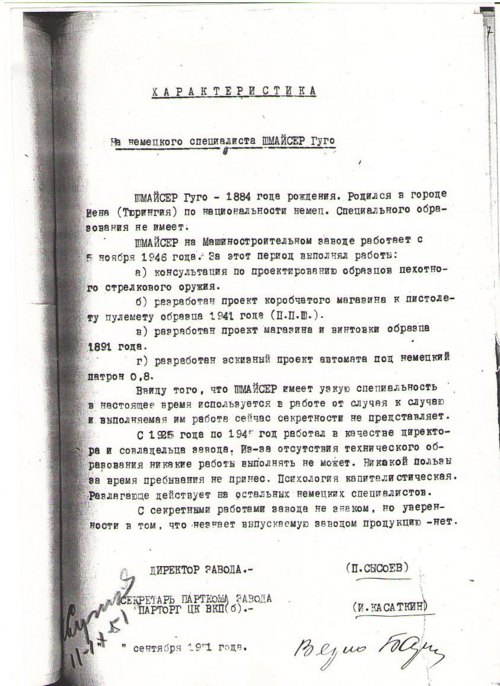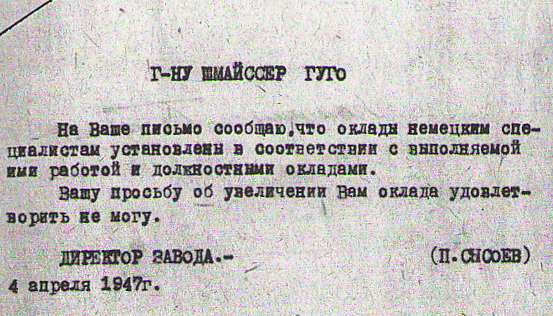William,
My own research into Manfred von Ardenne reveals he had knowledge of uranium isotope separation supposedly unknown at the time. He also invented the electron scanning microscope. I have a copy of an original German publication which shows it on the cover. The machine was built by Siemens. Later, for the Soviets, von Ardenne built a smaller, desk-top model.
For someone more knowledgeable about engineering atomic bombs and Uranium enrichment by the Germans, get the book Critical Mass by Carter P. Hydrick. One enrichment site was located in Poland near Oświęcim. The plant was called IG Farben Buna Werke but no synthetic rubber was produced there. And even though IG Farben had existing experience building such facilities, this one was beset by delays. It was also a joint Luftwaffe/SS/Army project and heavily defended by flak units. Details about the flak units are only available in a Polish language book.
A photograph has been published showing a small, unknown bomb that was fitted to a Bf 109. The details of its method of attachment were also made known. It was set in a holster-type configuration where the front of the bomb was partly enclosed. The Americans copied this for tests with fighter type aircraft.
Your lack of a good response here was expected. I experienced the same. But, please continue.
Best,
Ed
The small, unknown bomb you mention here was described by both Grothmann and at least one British and two (2) German writer-researchers. Since you bring this up:
From Geoffrey Brooks' book, Hitler's Terror Weapons: From V1 to Virmana, pg. 109:
Senior Engineer August Condors who had designed the V-3 England Gun, reported in February 1945 that the new decisive weapons would not be ready for use before April 1945, and in the last days of March 1945 the Luftwaffe dropped leaflets across the Lower Rhine advising the population to evacuate the area, since from the beginning of April new decisive weapons were to be deployed there. A cordon sanitaire 50 kms wide was required. From a military point of view the period towards the end of March 1945 offered the last opportunity to shutdown the Western Front by driving back the first crossings to the western bank of the Rhine. Rumours were rife that near Munster a number of Bf109s were being converted for Kamikaze operations (SO=Selbstopfereinsatze, Self-sacrifice operations) using a special 250 kg bomb, even an Me 262 jet could not outfly the bombs pressure wave.
It is known that Erich Schumann, the lead scientist in the HWA's research branch, and his explosives expert, Walter Trinks (who later rose to a high position in the West German MOD), produced a number of very advanced weapons concepts which they submitted as documentation for a series of patents in 1952. These included tactical nuclear weapons which utilized linear implosion. While this was obviously several years after the end of WWII, it is all but certain that they were rooted in concepts developed during the war itself.
By the way, where was Schumann when Heisenberg and Co were at Farm Hall? Trinks was likewise nowhere to be found, nor Alfred Klemm or any of dozens if not hundreds of other world class nuclear scientists and physicists. Why weren't they put under house arrest in the English countryside? Where were they in the meantime?
I am confused. Mr Romersa claimed to have attended a test on Rügen, on the Baltic coast. The memos say tests were conducted in Thüringen, a landlocked part of central Germany. Tests on Rügen AND in Thüringen?
Yes, and in two (2) other locations as well.
This is probably because there were a handful or more of different bomb designs, and at least three (3) different laboratories or centers of research which, according to Grothmann, each produced 2 prototypes of their own version of a nuclear weapon. Therefore a total of six (6) prototypes.
Two of the three major entities involved in the overall German nuclear weapons effort were 1) the
heereswaffenamt, the German Army Weapons Bureau, and 2) Manfred von Ardenne's facility in Berlin-Lichterfelde. The third may have been one or more SS technical labs located in Austria and Czechoslovakia, or the
marinewaffenamt (the German Navy Weapons Bureau, perhaps on Borholm Island or otherwise in the Baltic Sea off the northern coast of Germany).
Romersa stated in the 1985 article in
Defensa that the bomb tested at Rugen Island was extraordinarily heavy. According to him it came in two variants, one of which weighed about 20,000 pounds the other, 30,000. Thus 10 or 15 tons, respectively. If this information is correct, these weapons were obviously much too heavy to be delivered on target by any known WWII German aircraft other than, perhaps, a modified Messerschmitt Gigant transport plane, and this would have been cannon fodder had an attempt been made to penetrate Allied airspace with one. This left only a submarine mission or a static land deployment as the only possible ways such a huge and ungainly device could possibly have been used in combat---which in turn is probably part of the explanation for why it was not.
The pair of weapons tested in March, 1945 were dramatically smaller and more efficient boosted fission strategic nuclear weapon prototypes which weighed about two tons each. They were capable of being fitted with a steel fairing which would have enabled them to be delivered by V-2 missile, as corroborated by a number of documents and participant testimonies.




